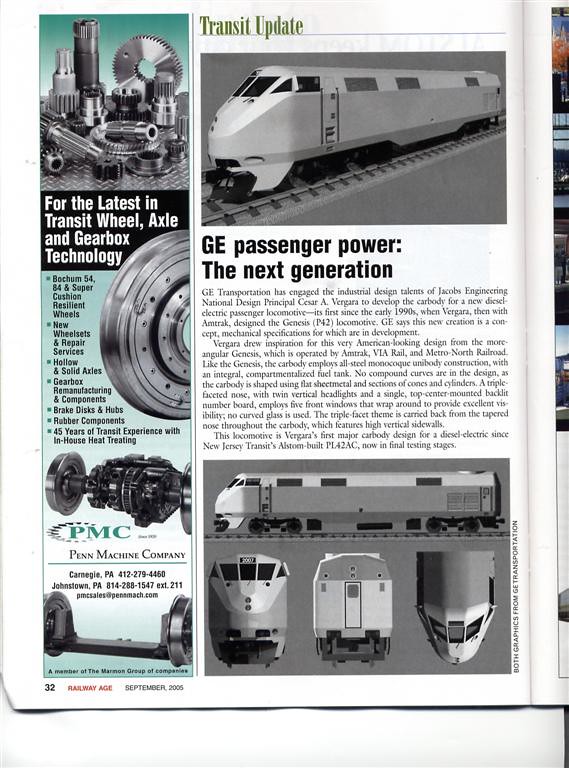Thanks, Dutch! Actual numbers are helpful in discussions. Does the same weight limit apply to freight locomotives of operators who run freight over Amtrak-owned lines?
F.w.i.w. The heaviest Amtrak four-axle locomotives seem to be the P32AC-- the dual mode Genesis used on runs into New York City-- at 275,000 pounds. Despite having only a 12-cylinder engine, it is several thousand pounds heavier than the DC Genesis types.
A few more numbers.
--- U.S. railroads tend to go for per-axle weights around one-and-a-half times what is permitted on (more passenger-oriented) European railroads.
--- 270,000 pounds, in the 1970s, was thought of as a reasonable weight for a 4-axle FREIGHT engine.
--- The F40 (EMD cowl-carbody passenger derivative of the GP-40 built for Amtrak and others starting in the late 1970s) was 259,000 pounds. (Significantly less than a typical GP-40 despite added weight of cowl and passenger (HEP) equipment. Obviously efforts were made to shave pounds-- the unit is a bit shorter than a GP-40-- but a lot of the saving was probably due to a smaller fuel tank.)
--- The P40 (first Amtrak Genesis model) was 263,000 pounds, despite such weight-saving design features as monocoque carboy and fuel tank made integral with frame. (GE's FDL engine is heavier than an EMD 645, and GE traction motors are heavier the EMD's.)
--- The P42 (second series of Genesis locomotives) was 269,000 pounds. (There's a general "law" about the modification and improvement and modernization and updating of engineering: THINGS GET HEAVIER.)
--- All weight discipline seems to have been lost in other designs. EMD's engines for the Long Island were 294,000 pounds, and the MP36/MP40 types from Boise can apparently weigh up to 295,000: these are heavier, per axle, than CSX's 436,000 pound "heavy" AC4400/ES44AC six-axle freight types!
(Sources: most of the weights above are from Greg McDonnell's book on contemporary diesels, which gives 260,000 for the F40: 259,000 is from the EMD operator's manual, written specifically for Amtrak units with numbers in the low 200s, valuable online at George Ellwood's "Fallen Flags" rail image site.)

